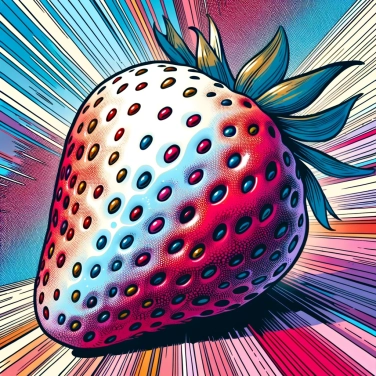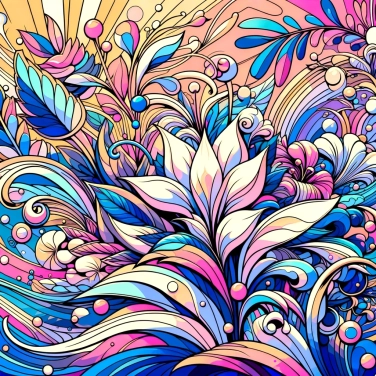Strawberry seeds are located on the surface of the fruit to be easily dispersed by animals and ensure the reproduction of the plant. Strawberries are actually composite fruits, formed by many small fruits, each containing a seed.

The strawberry is not technically a true fruit but a false fruit, as it is a fleshy part that arises from the swelling of the floral receptacle. What are commonly referred to as seeds on its surface are actually tiny fruits called achenes. Each achene contains a single true seed. This peculiar phenomenon occurs because the true fruits of strawberry plants do not develop at the core but directly on the swollen receptacle. It is these small external achenes that, as they ripen, give the strawberry its distinctive texture to the touch.
The seeds on the surface of strawberries are actually achenes, small dry fruits that each contain a seed. Each achene can potentially give rise to a new strawberry plant when it falls to the ground and encounters the right conditions. These tiny seeds ensure the sexual reproduction of the plant: after pollination, they are produced with a genetic background different from that of the parent. It is thanks to this that strawberry plants have been able to develop so many different varieties, providing adaptability and diversity to this delectable plant.
The seeds of strawberries are placed outside to maximize their chance of traveling. When a bird or a small mammal bites into a strawberry, it often carries away a few seeds in the process. Then, these animals naturally disperse the seeds elsewhere through their droppings after digestion or simply by leaving behind fruit scraps. Some seeds fall directly to the ground under the strawberry plant, but the winning strategy is to encourage animals to transport them farther away. Other seeds even benefit from being moved by rainwater or the wind, which rolls the ripe fruits along the ground. It's clever: strawberry plants thus expand their territory without moving an inch!
Strawberries have developed this funny characteristic of having their seeds on the surface primarily for a practical reason: to attract animals and promote dispersion. With their clearly visible external seeds, the ripe red fruits attract birds and small mammals. By nibbling on these strawberries, animals transport the seeds elsewhere, thus facilitating their long-distance dispersion. This strategy significantly increases the survival and reproduction rates of strawberry plants. Another nice evolutionary advantage: seeds located on the outside often germinate more easily than those hidden deep inside a fleshy fruit. The external seeds, exposed to air and light, thus benefit from optimal germination conditions.
The tiny seeds on the surface of strawberries directly influence the taste experience. When you bite into a strawberry, they provide a slight texture contrast, with a crunchy effect that balances the soft and juicy pulp of the fruit. Some people love this crunchy aspect, finding it makes the fruit more interesting to chew, while others prefer it smoother. Additionally, these external seeds can sometimes cause slight irritation for some people sensitive to the small seeds that get stuck between their teeth. But overall, it’s this tender-crunchy combination that is part of the unique pleasure of eating a strawberry.
A strawberry has an average of 200 achenes on its external surface, and each of these tiny dots is an independent seed capable of growing into a new strawberry plant.
Each strawberry on the same plant can have a slightly different taste depending on sun exposure, watering, and soil quality. These are the factors that make each strawberry unique.
Birds, attracted by the bright red color of strawberries, play an essential role in the natural dispersion of strawberry seeds, thus contributing to their reproduction and establishment in new geographical areas.
Botanical research indicates that the outer position of seeds on strawberries helps maximize their dispersion by preventing the concentration of seeds in the heart of the fruit, where they would be less accessible to dispersal agents such as insects or animals.
Each strawberry typically contains around 200 achenes (the visible seeds). This abundance increases the chances that some seeds will germinate effectively, ensuring the survival and spread of strawberry plants in nature.
Yes, the small external seeds (achenes) provide a slightly crunchy texture that is characteristic during tasting. However, their flavor is subtle and generally does not significantly alter that of the sweet and juicy pulp.
Yes, it is possible to grow strawberry plants from the seeds found on strawberries. However, this method requires patience and diligence: the seeds must be thoroughly cleaned, dried, and then sown in suitable soil to maximize the chances of germination.
Yes, the bright red color of the strawberry attracts animals, particularly birds and some mammals, which consume the fruit and then disperse the seeds. This is an evolutionary adaptation that ensures the propagation of the plant.
Yes, the strawberry is almost unique in this regard. In fact, what is called a seed on the strawberry is technically an achene, a small dry fruit that contains a single seed. Thus, the strawberry carries its true fruits – the achenes – on the outer surface of its flesh.

No one has answered this quiz yet, be the first!' :-)
Question 1/5